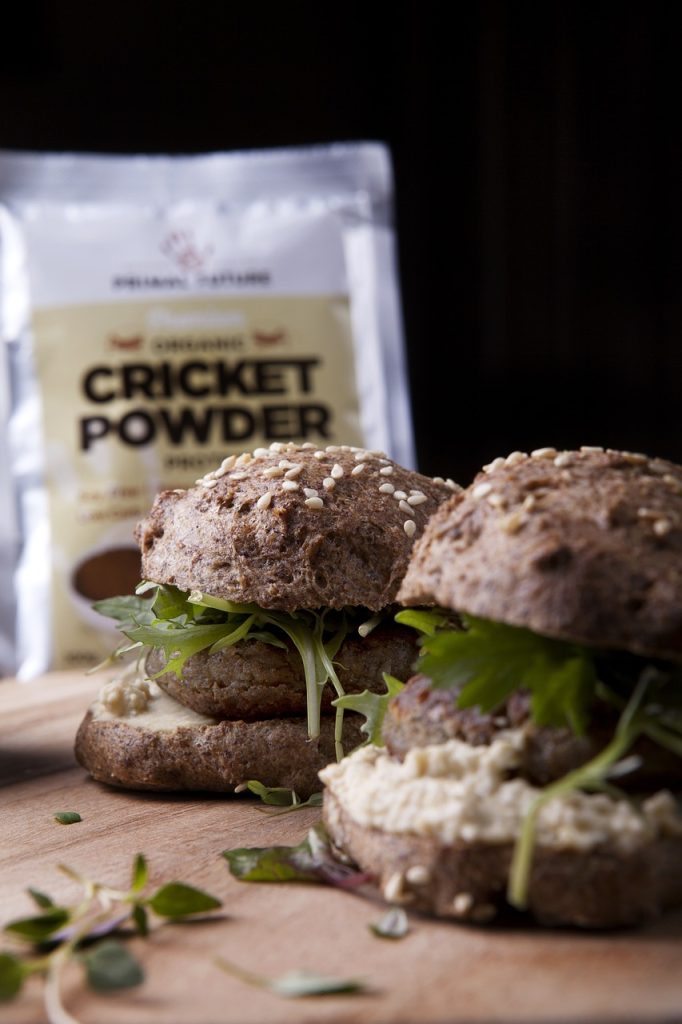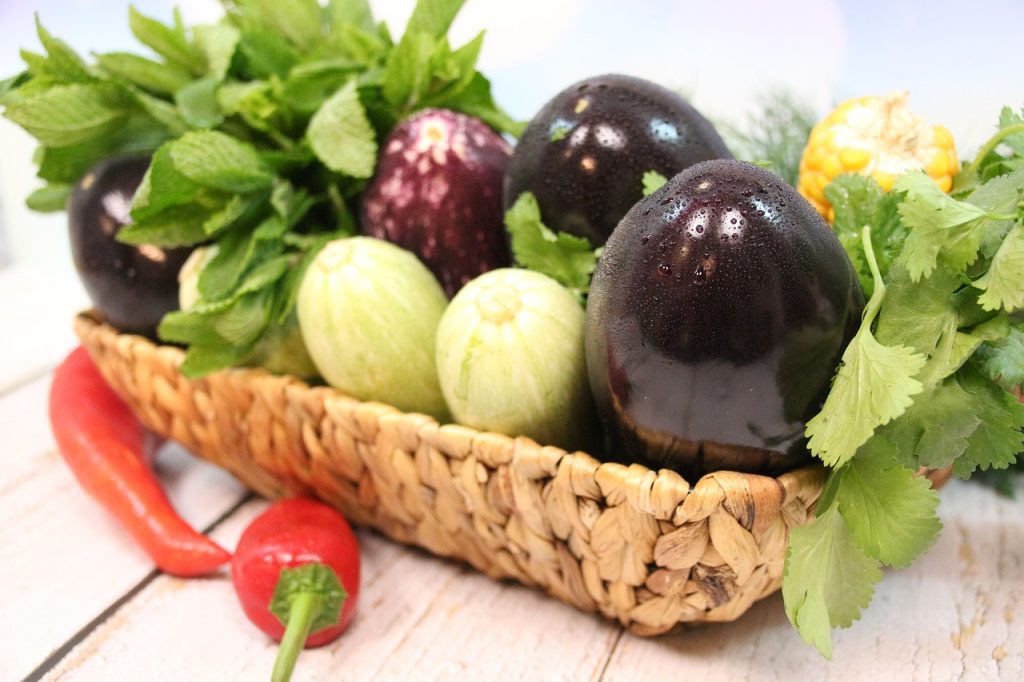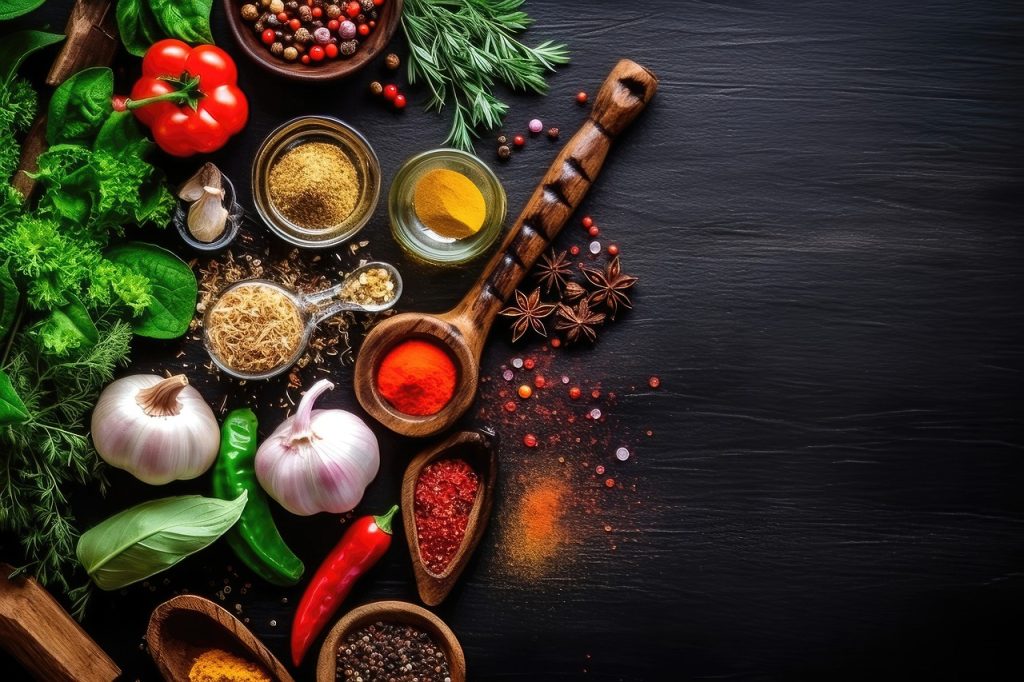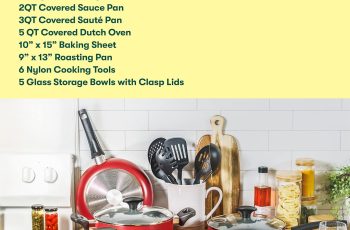Ad Blocker Detected
Our website is made possible by displaying online advertisements to our visitors. Please consider supporting us by disabling your ad blocker.
In the world of culinary innovation, dutch ovens have emerged as an essential tool in sustainable and energy-efficient cooking. Whether you are a professional chef or a home cook, these versatile and durable cooking vessels have revolutionized the way we prepare and enjoy our meals. By harnessing the unique qualities of cast iron, dutch ovens ensure even heat distribution and retention, resulting in perfectly cooked dishes while minimizing energy consumption. Additionally, their tight-fitting lids and superior insulation further contribute to their energy efficiency. In this article, we will explore the various ways in which dutch ovens support sustainable and energy-efficient cooking practices, making them an indispensable ally in the modern kitchen.
Introduction
In recent years, there has been a growing emphasis on sustainable and energy-efficient cooking practices. As individuals and societies become more conscious of their environmental impact, it is crucial to explore cooking methods that minimize energy consumption and promote sustainability. Dutch ovens have emerged as an excellent choice for those seeking to reduce their carbon footprint in the kitchen. This article will delve into the reasons why Dutch ovens are sustainable and energy-efficient, the benefits of cooking with these versatile cookware, the science behind Dutch oven cooking, how to choose the right Dutch oven, various cooking methods that can be employed with Dutch ovens, techniques to optimize energy efficiency, recommended recipes, maintenance and care tips, and the future of Dutch ovens in sustainable cooking.
Material and Design
Dutch ovens are typically crafted from durable and heat-retaining materials such as cast iron or enameled cast iron. These materials ensure excellent heat distribution and retention, allowing the food to cook evenly and efficiently. The design of Dutch ovens, with their thick walls and tight-fitting lids, further contributes to their energy efficiency. The cast iron construction of Dutch ovens enables them to retain heat for extended periods of time, reducing the need for continuous and excessive heat application.
Heat Retention and Distribution
One of the key reasons why Dutch ovens are considered energy-efficient is their exceptional heat retention and distribution capabilities. The thick walls of Dutch ovens ensure that heat is held within the pot, enabling food to cook using residual heat even when the heat source is turned off. This feature not only minimizes energy consumption but also offers a more consistent cooking experience as the food continues to gently cook within the Dutch oven. Additionally, the even distribution of heat within the pot ensures that there are no hot spots, reducing the risk of burning or overcooking certain portions of the dish.
Reduced Cooking Time
The heat retention and distribution properties of Dutch ovens significantly contribute to reduced cooking time. The ability of Dutch ovens to trap heat allows for more efficient and faster cooking as compared to other cookware. With their ability to effectively retain and distribute heat, Dutch ovens allow for slower, low-temperature cooking methods that result in tender and flavorful meals. This reduced cooking time not only saves energy but also results in more succulent dishes.
Environmentally Friendly Cooking
One of the primary benefits of using Dutch ovens for cooking is their environmentally friendly nature. As previously discussed, Dutch ovens require less energy to cook food due to their excellent heat retention and distribution properties. This results in reduced energy consumption and a smaller carbon footprint. By opting for Dutch ovens, individuals can actively contribute to sustainability efforts by minimizing their impact on the environment.
Cost-Effective Cooking
Another advantage of utilizing Dutch ovens is their cost-effectiveness. Traditional Dutch ovens made from cast iron are known for their durability, meaning they can withstand years of use without needing to be replaced. Additionally, the ability of Dutch ovens to cook food using minimal energy reduces energy costs in the long run. By investing in a high-quality Dutch oven, individuals can enjoy both the economic benefits of reduced energy consumption and long-term durability.

Healthier Cooking
In addition to their sustainable and cost-effective qualities, Dutch ovens also offer health benefits. The slow and gentle cooking methods employed with Dutch ovens help preserve the nutritional content of food by minimizing nutrient loss. By cooking at lower temperatures for extended periods, Dutch ovens ensure that the flavors and vitamins in the food are retained. Furthermore, the use of natural materials like cast iron avoids non-stick coatings that can potentially release harmful chemicals, making Dutch ovens a healthier choice for cooking.
Minimal Energy Consumption
One of the primary ways in which Dutch ovens contribute to sustainability is through their minimal energy consumption. The exceptional heat retention properties of Dutch ovens allow for cooking on low heat settings for extended periods of time. This reduces the need for excessive energy use, lowering carbon emissions and promoting environmentally conscious cooking practices.
Reduced Emissions
By utilizing Dutch ovens, individuals can actively contribute to the reduction of greenhouse gas emissions. The ability of Dutch ovens to cook food using less energy translates to reduced emissions from energy sources. Traditional cooking methods often involve high heat and longer cooking times, resulting in more emissions and a greater environmental impact. Dutch ovens, with their energy-efficient design, help combat climate change by minimizing carbon emissions during the cooking process.
Less Food Waste
Food waste is a significant issue that contributes to environmental harm. Dutch ovens play a role in combating this problem by reducing food waste. The even heat distribution and excellent heat retention properties of Dutch ovens ensure that food is cooked evenly and thoroughly. This prevents uneven cooking or burning, resulting in more consistently cooked meals and reducing the likelihood of food being wasted due to undercooking or overcooking.
Thermal Conductivity
The science behind Dutch oven cooking lies in their thermal conductivity. Cast iron, the material commonly used in Dutch ovens, has excellent thermal conductivity properties. It efficiently absorbs and distributes heat, ensuring that food is cooked evenly throughout. This even heat distribution contributes to the energy efficiency and exceptional cooking performance of Dutch ovens.
Convection Heat
Dutch ovens utilize convection heat, a process in which heat is circulated through the pot by air movement. As the pot heats up, the air inside it expands, rises, and circulates, creating a convection current. This convection heat helps distribute heat evenly, ensuring that food cooks uniformly. By harnessing convection heat, Dutch ovens optimize energy usage and reduce cooking time.

Radiant Heat
Radiant heat is another aspect of Dutch oven cooking. When the pot is heated, it emits radiant heat, which is then absorbed by the food. This intense heat facilitates browning and caramelization, enhancing the flavors and textures of the dishes. Radiant heat also contributes to the overall energy efficiency of Dutch ovens by reducing cooking times and ensuring that food is cooked thoroughly.
Material Options
Dutch ovens are available in a variety of materials, each with its own advantages and considerations. Cast iron is a popular choice due to its excellent heat retention and distribution properties. However, it requires seasoning and proper maintenance to prevent rusting. Enameled cast iron Dutch ovens offer the benefits of cast iron while being easier to clean and maintain. Other options include stainless steel, which offers durability and easy maintenance, and ceramic, which provides excellent heat retention but may be more delicate.
Size and Capacity
When selecting a Dutch oven, consider the size and capacity that suits your cooking needs. Dutch ovens come in various sizes, typically ranging from 4 to 9 quarts. Larger Dutch ovens are suitable for cooking larger quantities of food or roasting whole poultry, while smaller ones are ideal for individual or smaller portions. Consider the size of your stovetop and oven to ensure the Dutch oven fits properly.
Additional Features
Some Dutch ovens come with additional features that can enhance cooking experiences. Features like a tight-fitting lid with an oven-safe knob, heat-resistant handles, and a stainless steel or enamel interior for easy cleaning are worth considering. These features add convenience and durability to your Dutch oven, ensuring optimal performance and longevity.
Baking
Dutch ovens excel in baking due to their heat retention and distribution properties. The even heat circulates within the pot, resulting in perfectly baked goods with a crisp crust and a moist interior. Dutch ovens are particularly ideal for bread baking, as the tight-fitting lid traps steam, mimicking the effect of a professional bread oven. From crusty artisan loaves to fluffy dinner rolls, Dutch oven baking yields impressive results.
Stewing and Braising
The slow and low-temperature cooking methods employed by Dutch ovens make them ideal for stewing and braising. The even heat distribution allows for gentle simmering, which results in tender and flavorful stews and braised meats. The tight-fitting lid helps retain moisture, ensuring the food stays moist and succulent during the cooking process. Whether it’s a hearty beef stew or a melt-in-your-mouth braised chicken dish, Dutch ovens excel in creating comforting one-pot meals.

Frying
While frying might not be the first cooking method that comes to mind when thinking of Dutch ovens, they can be suitable for frying as well. Cast iron Dutch ovens are durable and can withstand high heat, making them excellent for deep frying. The superior heat retention and even heat distribution properties ensure that the oil stays at a consistent temperature, resulting in perfectly fried foods.
Roasting
Roasting with a Dutch oven offers a unique cooking experience. The cast iron construction of Dutch ovens helps to retain the moisture in meats and vegetables, resulting in tender and juicy dishes. Additionally, the tight-fitting lid locks in flavors, enhancing the aroma and taste of the roasted foods. Whether it’s a succulent roast chicken or a flavorful roasted vegetable medley, Dutch oven roasting brings out the best in your ingredients.
Preheating Techniques
To optimize energy efficiency, preheating techniques can be employed when using Dutch ovens. Preheating the Dutch oven before adding food allows the cooking process to start immediately. This reduces the time required for the pot to reach the desired cooking temperature, conserving energy in the process. Preheating can be done on the stovetop or in the oven, depending on the specific recipe and cooking method.
Proper Heat Adjustment
Proper heat adjustment is key to energy-efficient Dutch oven cooking. Once the desired temperature is reached, it is often possible to reduce heat settings and allow the Dutch oven’s heat retention properties to continue cooking the food. Monitoring the heat and adjusting accordingly ensures that the food is cooked thoroughly while minimizing energy consumption.
Insulation Methods
To further enhance energy efficiency, insulation methods can be implemented when using Dutch ovens. Placing a folded kitchen towel or a heat-resistant mat underneath the Dutch oven when cooking on the stovetop can help insulate the pot, preventing heat loss to the surrounding surface. This practice ensures that more heat is directed towards the food, reducing the need for extra heat or prolonged cooking times.
One-Pot Meals
The versatility of Dutch ovens makes them perfect for creating delicious one-pot meals. From hearty stews to flavorful curries, Dutch oven one-pot meals offer convenience and ease while minimizing energy consumption by combining multiple ingredients and flavors in a single pot.
Slow-Cooked Dishes
Slow cooking is a popular method for Dutch oven recipes. The slow and gentle cooking process allows flavors to develop and ingredients to tenderize, resulting in rich and satisfying dishes. Popular slow-cooked Dutch oven recipes include braised meats, stews, and chili, where the long cooking time enhances the flavors and textures.
Bread and Pastry Recipes
Dutch ovens are a bread baker’s secret weapon. The even heat distribution and steam retention properties of Dutch ovens create an ideal baking environment, yielding bakery-quality bread with a crispy crust and a soft interior. Dutch ovens can also be used for baking pastries and desserts that benefit from the gentle and consistent heat provided by these versatile pots.
Cleaning Tips
Proper maintenance and care are essential for prolonging the life of Dutch ovens. Cleaning them after each use prevents buildup and ensures optimal performance. To clean a Dutch oven, use warm water and a non-abrasive sponge or brush to remove any food residue. Avoid using soap, as it can strip away the seasoning. Stubborn food particles can be loosened by soaking the Dutch oven in warm water before cleaning.
Seasoning and Re-seasoning
To maintain and improve the non-stick properties of cast iron Dutch ovens, seasoning is required. Seasoning involves applying a thin layer of oil and heating it to create a natural non-stick coating. Regularly re-seasoning Dutch ovens helps prevent rust and maintain their longevity. Following the manufacturer’s instructions and guidance is essential for achieving the best results and ensuring the longevity of the Dutch oven.
Storage
Proper storage of Dutch ovens is crucial for maintaining their quality and extending their lifespan. Before storing, ensure the Dutch oven is completely dry to prevent rusting. Store Dutch ovens in a cool, dry place, preferably with the lid slightly ajar to allow ventilation and prevent moisture buildup. Protect the Dutch oven from dust and potential damage by using a protective cover or storing it in a sturdy container.
Innovations and Improvements
The future of Dutch ovens in sustainable cooking is bright, with ongoing innovations and improvements in materials and designs. Manufacturers are exploring new materials and coatings that enhance energy efficiency while maintaining durability. Additionally, advancements in heat retention and distribution technologies have the potential to further optimize energy consumption and reduce cooking times.
Integration with Renewable Energy
As renewable energy sources gain traction, Dutch ovens can play a role in harnessing and utilizing this sustainable energy. Dutch ovens can be employed in conjunction with solar ovens or other renewable energy cooking systems, allowing for efficient and environmentally friendly cooking without relying on traditional energy sources.
Education and Awareness
Education and awareness regarding the benefits of Dutch ovens in sustainable cooking are crucial for their wider adoption. Promoting the advantages of Dutch ovens in terms of energy efficiency, reduced emissions, and healthier cooking can inspire individuals to make conscious choices in the kitchen. By providing information, resources, and practical tips, more people can embrace Dutch ovens as a sustainable and energy-efficient cooking solution.
In conclusion, Dutch ovens have emerged as a sustainable and energy-efficient cooking appliance that offers numerous benefits. Their material and design, heat retention and distribution properties, and reduced cooking time make them an excellent choice for environmentally friendly and cost-effective cooking. Dutch ovens contribute to sustainability through minimal energy consumption, reduced emissions, and less food waste. The science behind Dutch oven cooking, including thermal conductivity, convection heat, and radiant heat, further enhances their energy efficiency. Choosing the right Dutch oven, utilizing different cooking methods, optimizing energy efficiency through preheating techniques and heat adjustment, and experimenting with various recipes ensure a rewarding cooking experience. With proper maintenance and care, Dutch ovens can last for generations. The future of Dutch ovens in sustainable cooking looks promising, with ongoing innovations, integration with renewable energy sources, and increased education and awareness. Embracing Dutch ovens as a sustainable cooking solution not only benefits individuals but also contributes to a greener and more sustainable planet.

